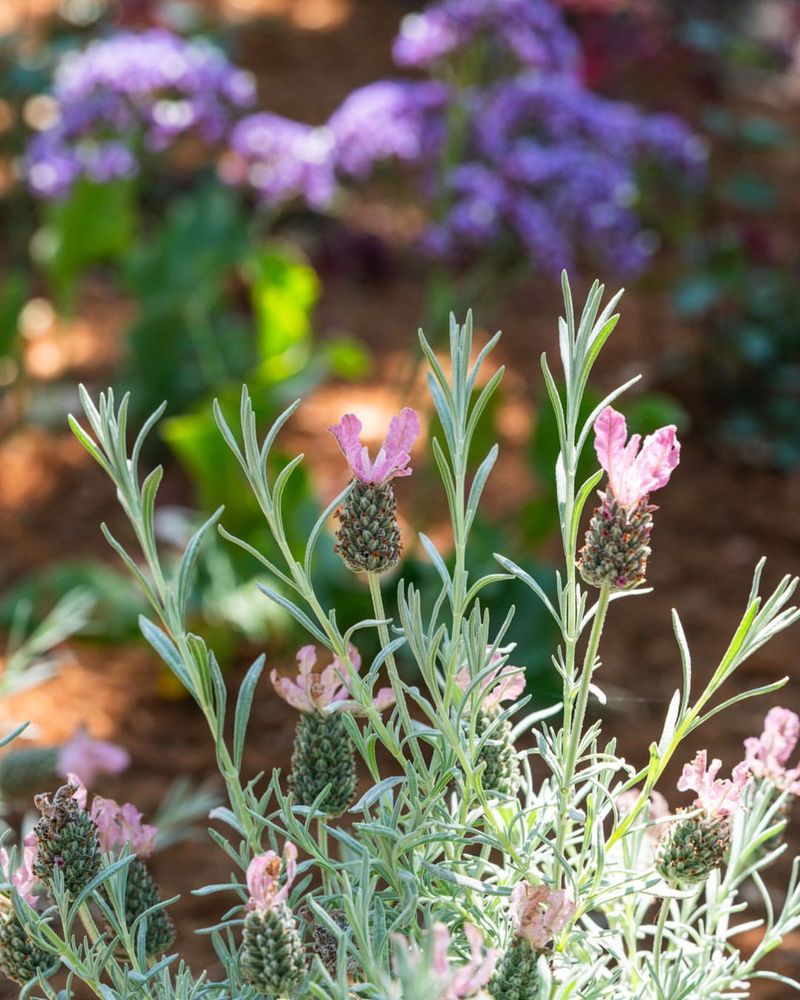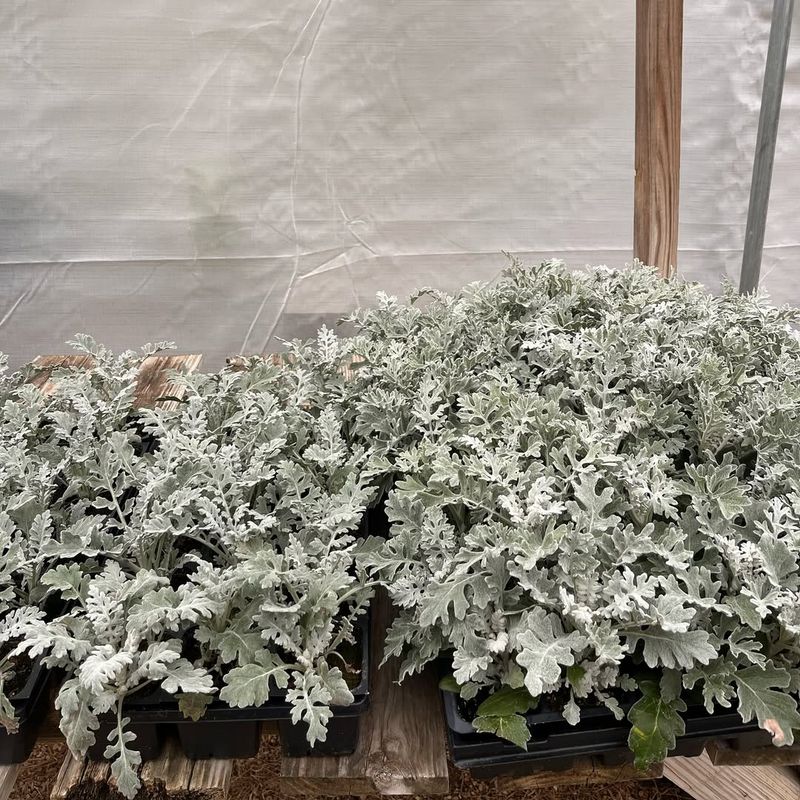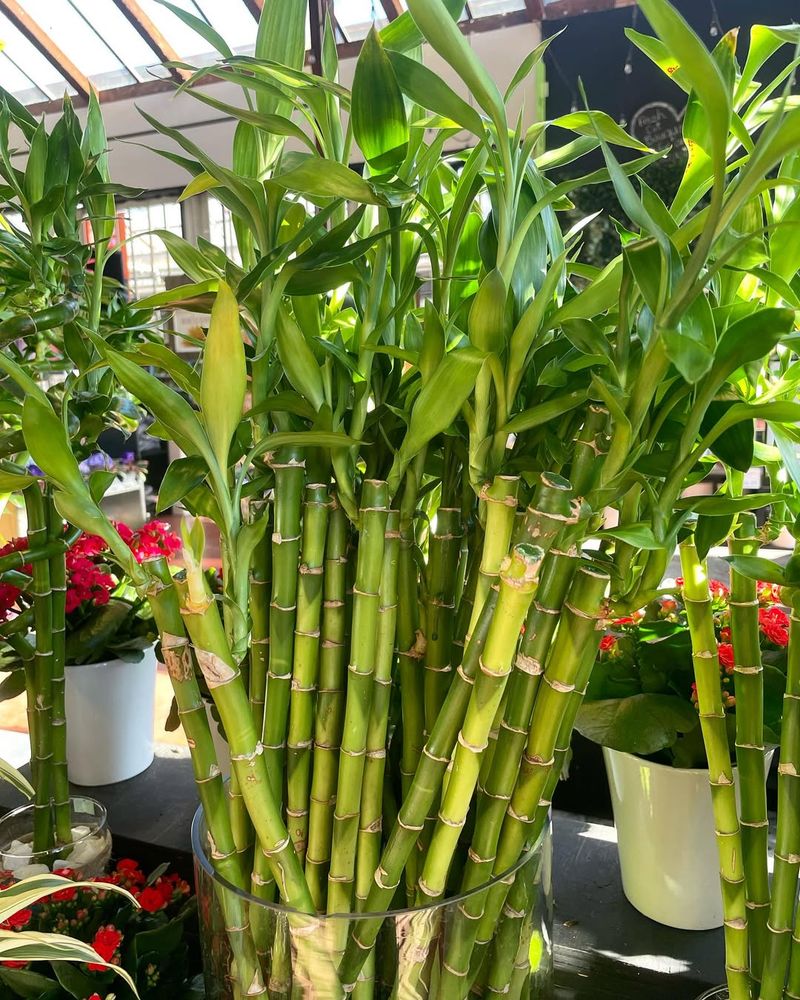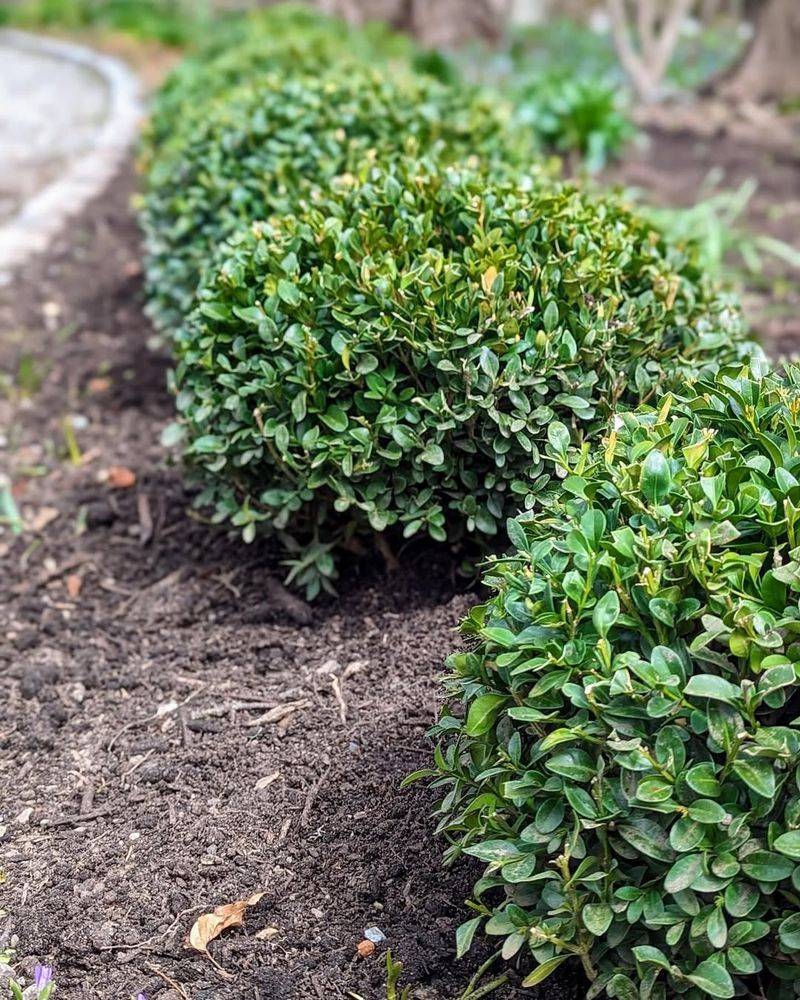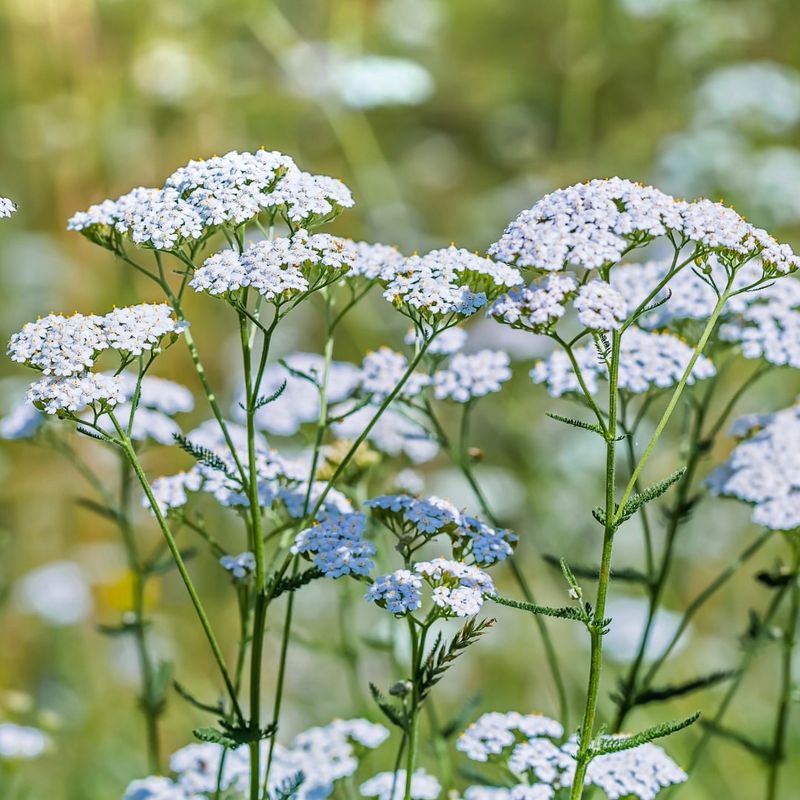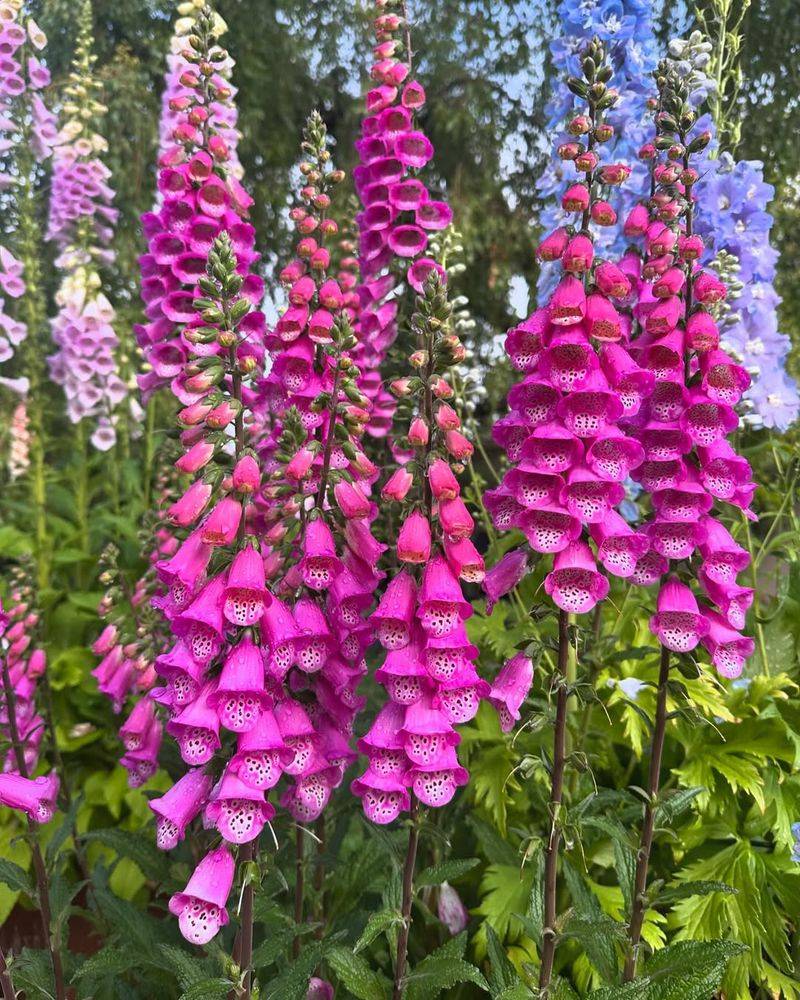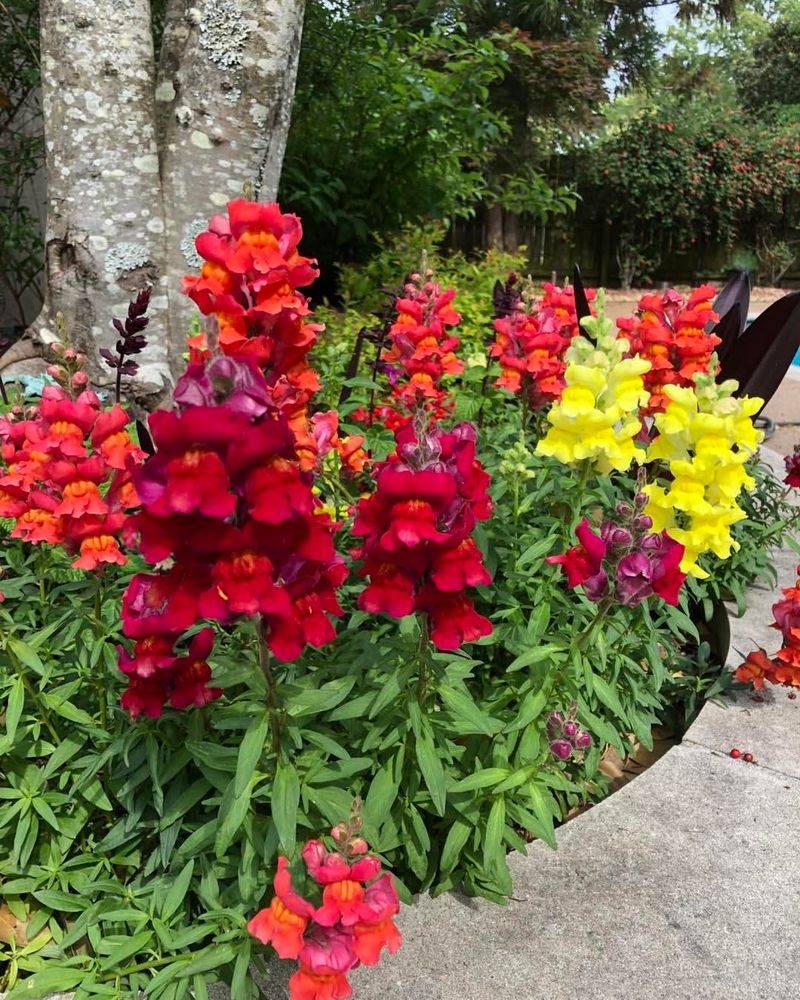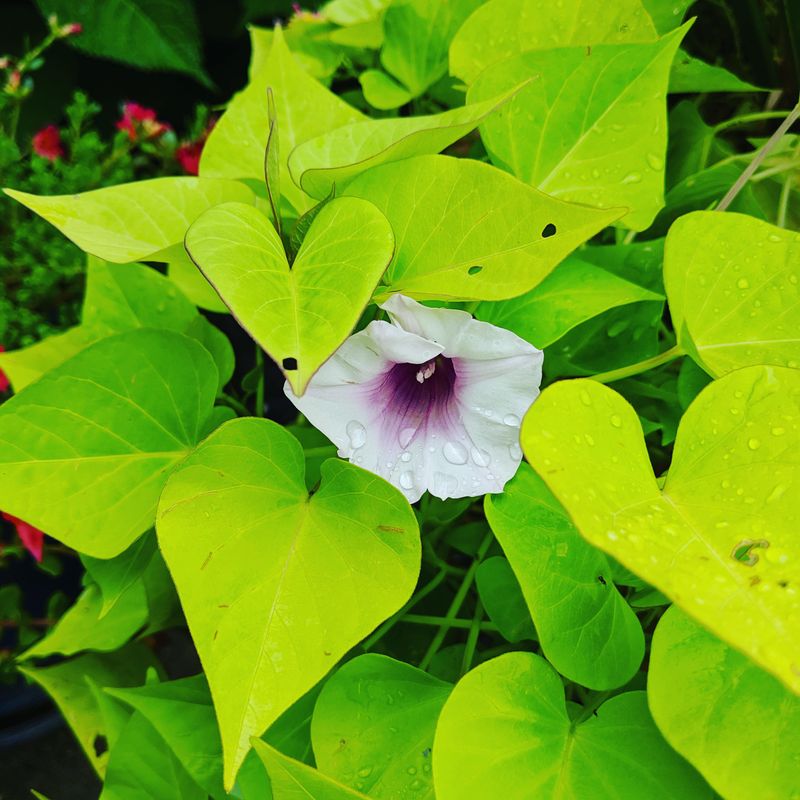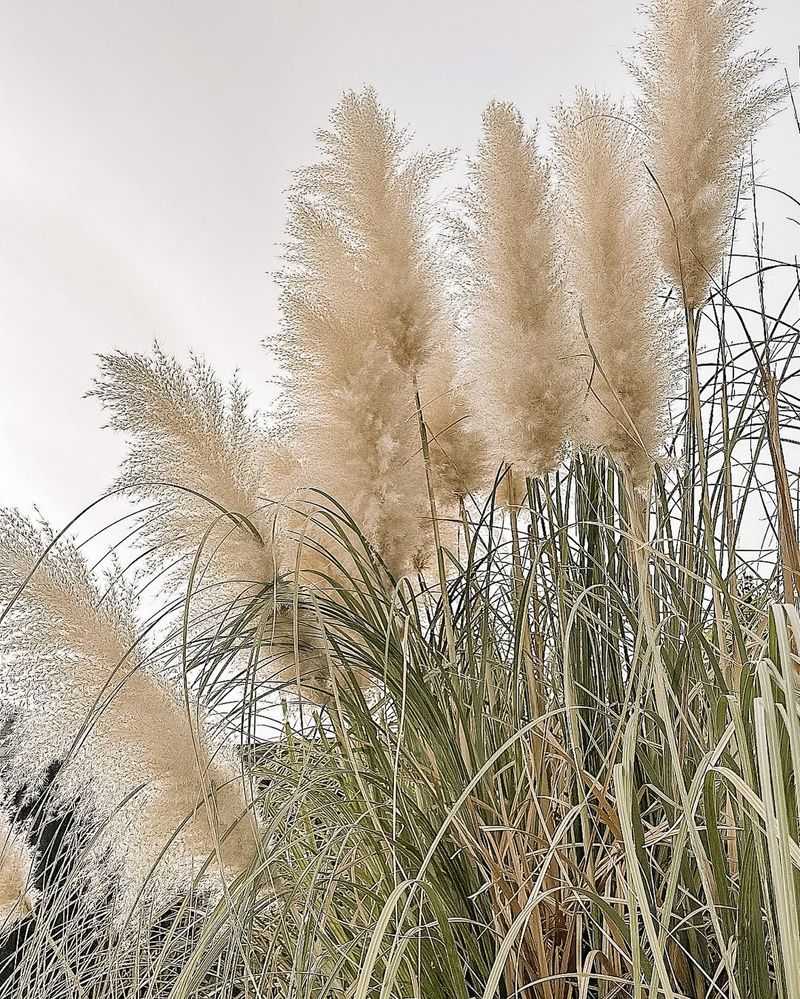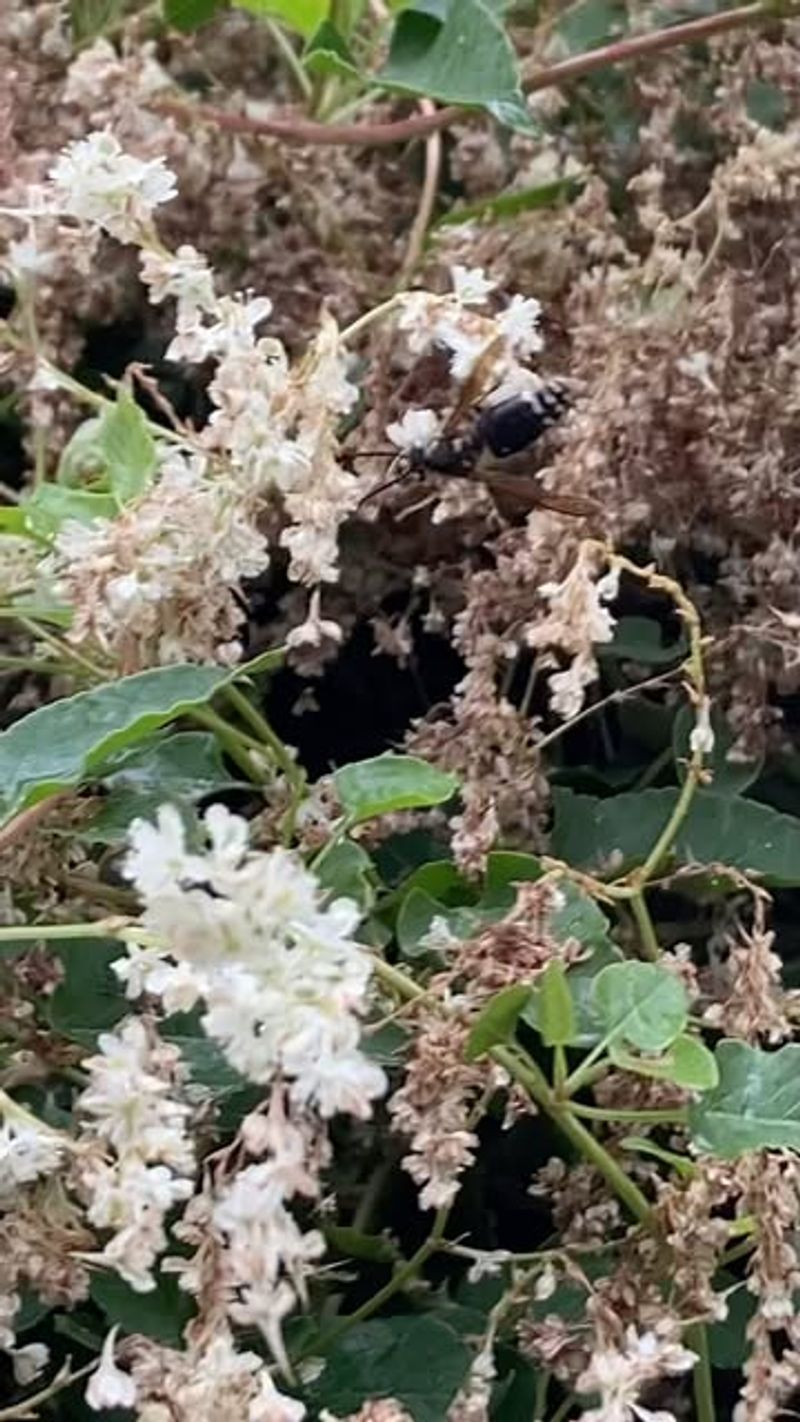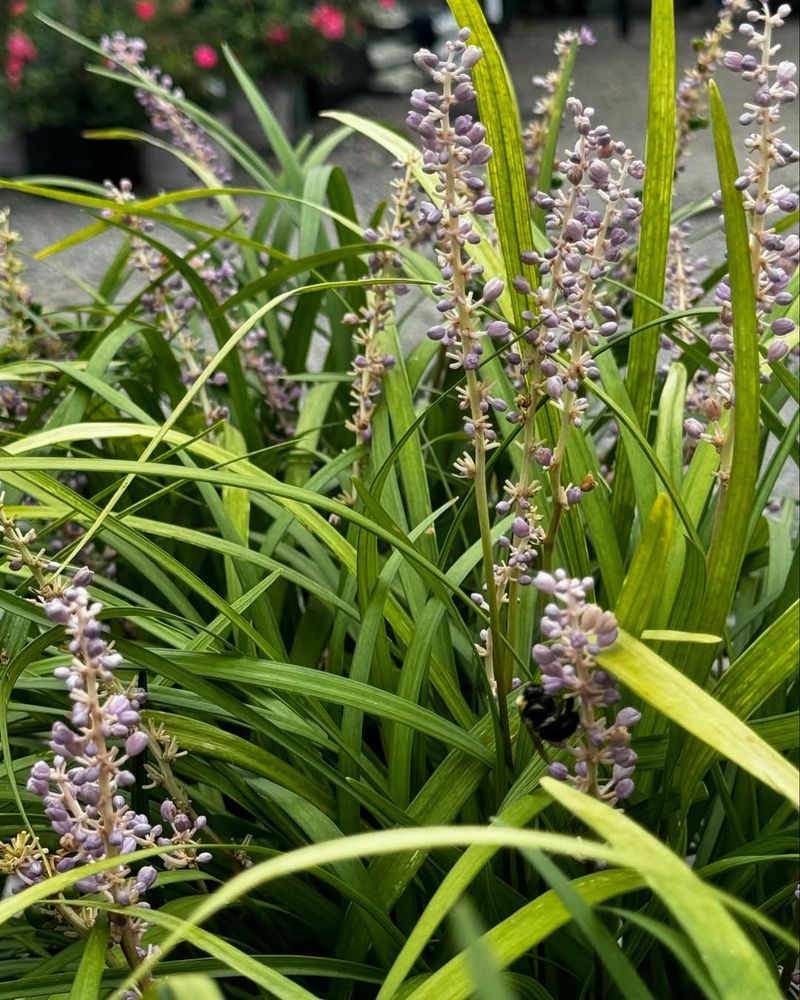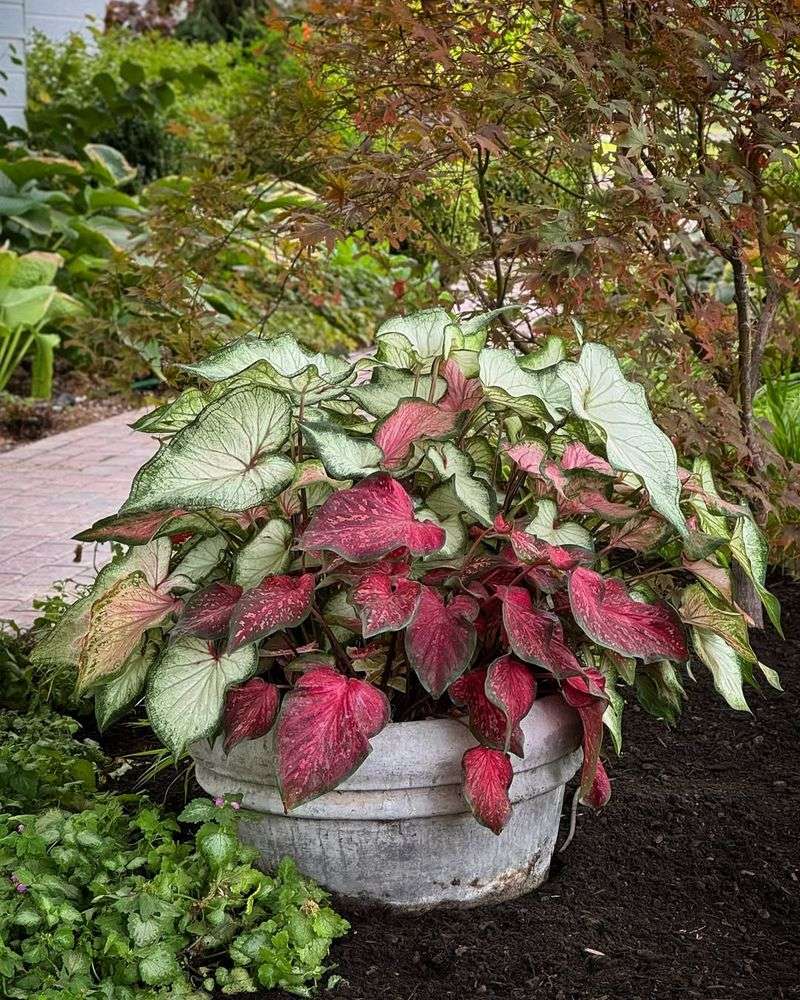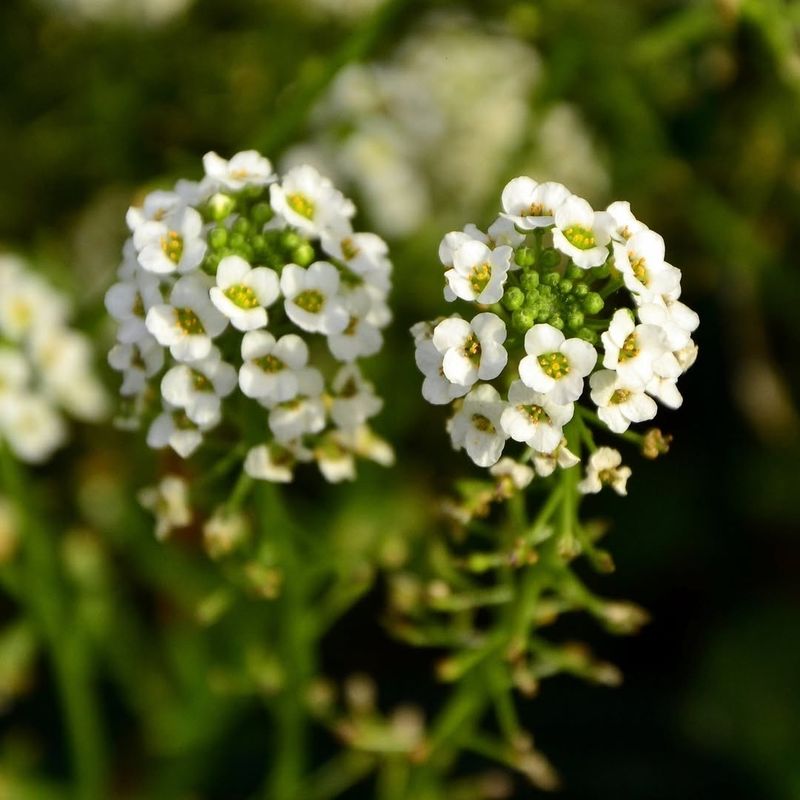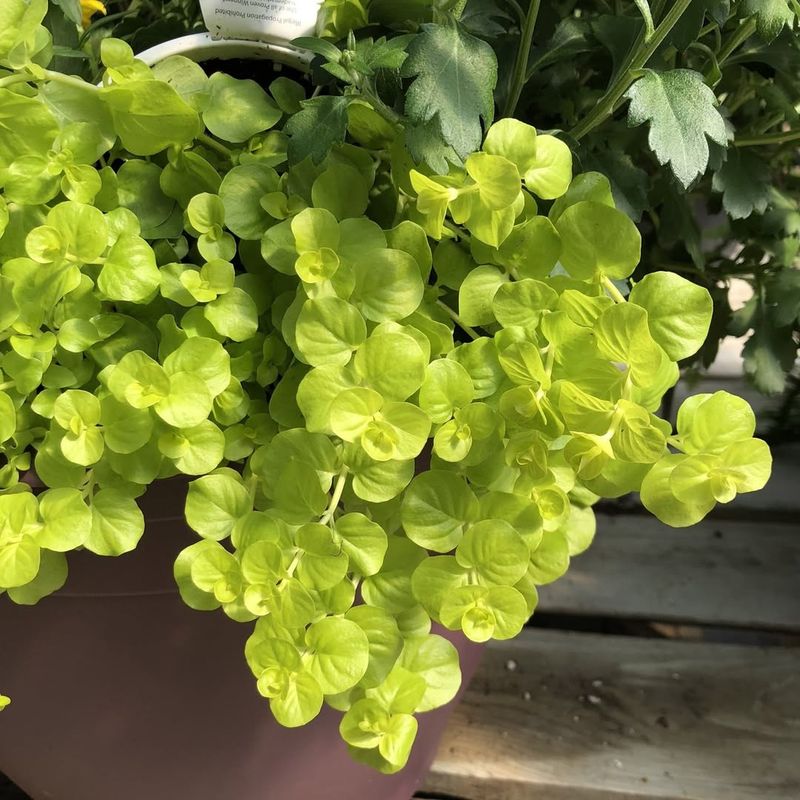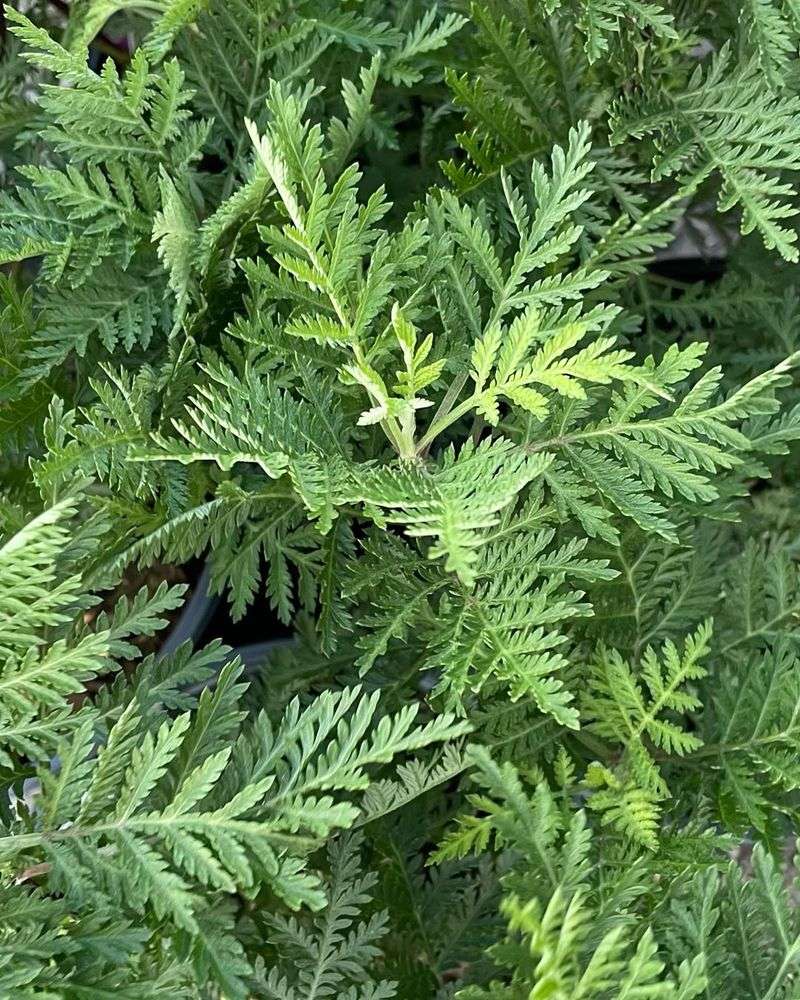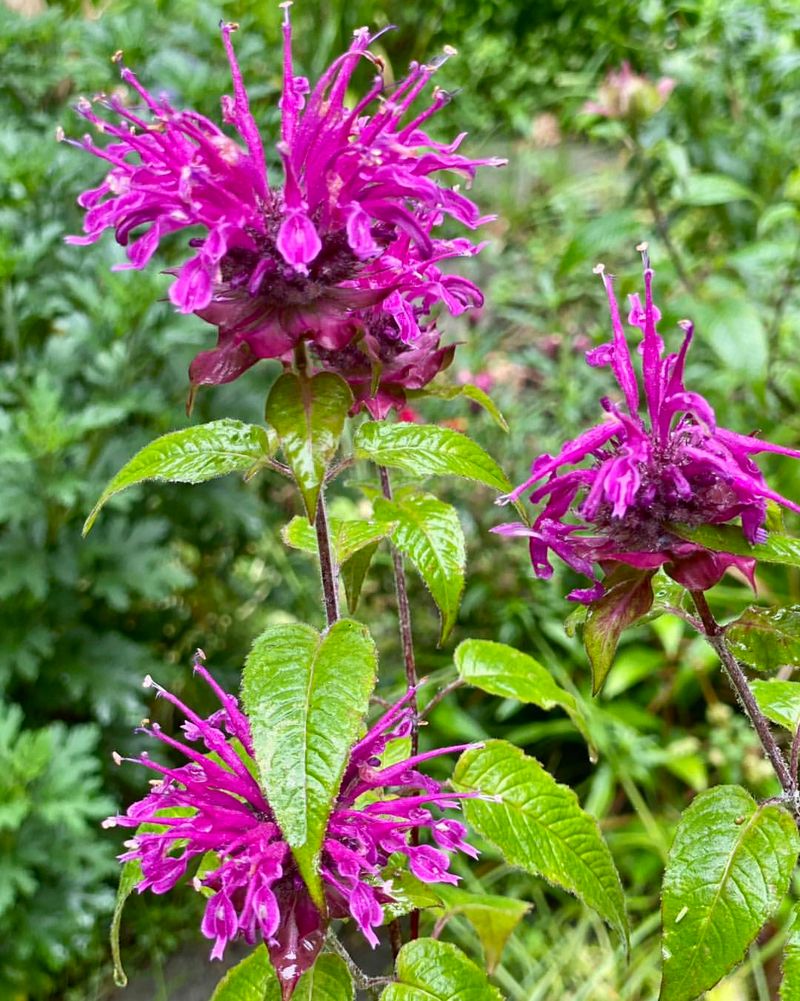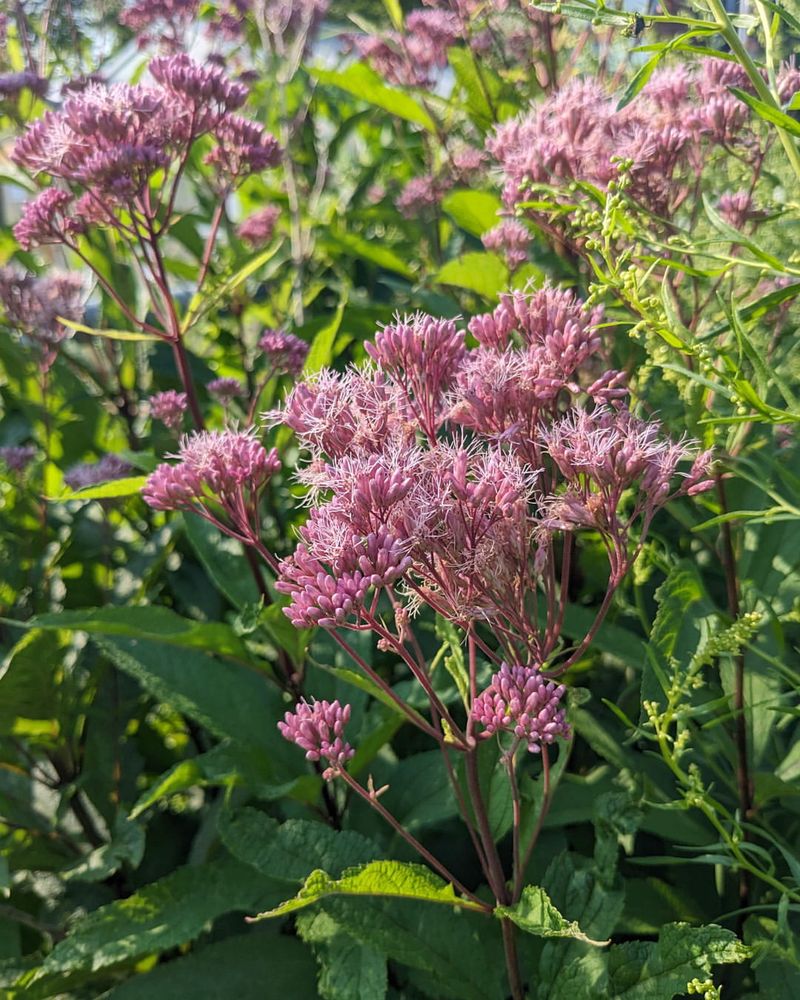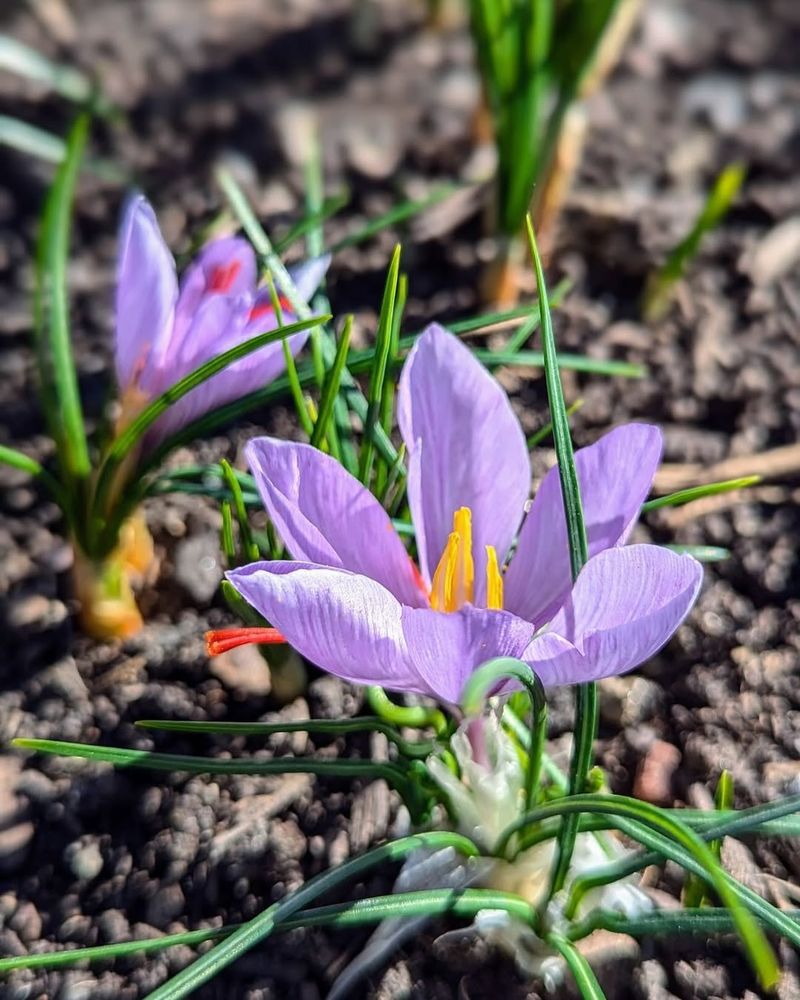Gardening without the buzz is like a quiet afternoon nap—so peaceful and serene. If you’re not a fan of buzzing bees and still want a thriving garden, you’re in luck! I’ve compiled a list of 24 delightful plants that won’t invite those busy little pollinators (and those that definitely will). From colorful blooms to lush green foliage, these plants will add beauty to your garden while keeping the bees at bay.
1. Lavender Cotton
Looking for something soft and silvery? Lavender cotton boasts bright yellow button-like flowers amidst its soft foliage. Though it sounds sweet, bees don’t find it too enticing. The plant’s aromatic leaves are more appreciated by humans, adding a Mediterranean touch to gardens.
Lavender cotton thrives in well-drained soil, making it perfect for rock gardens. Not only is it visually appealing, but it’s also deer-resistant. This hardy plant appreciates full sun and is virtually maintenance-free. For those wanting a plant that’s both floral and fragrant without the bee-attracting qualities, lavender cotton checks all the boxes.
2. Ferns
Ever dreamt of a lush, green sanctuary? Ferns provide that serene backdrop without the buzz. Their leafy fronds create a sense of calm and are perfect for shaded areas. As non-flowering plants, they don’t attract bees, making them ideal for bee-sensitive spaces.
Ferns are versatile, thriving both indoors and outdoors. Their low-maintenance nature suits those who love greenery without the hassle. Whether in a pot or a garden bed, ferns add texture and a woodland feel. With varieties like the Boston or Maidenhair, your options are abundant and bee-free.
3. Dusty Miller
Craving unique foliage? Dusty Miller’s silvery leaves stand out in any garden. This plant’s velvety texture is a visual delight, yet bees tend to ignore it. Dusty Miller thrives in sunny spots, adding a touch of elegance with its striking contrast to green plants.
Perfect for borders or containers, it’s a gardener’s dream for easy care. While it complements flowering plants beautifully, it remains unappealing to bees. Its drought-resistant nature makes it a resilient choice for those forgetful about watering. With its charm and resilience, Dusty Miller is an asset to any garden.
4. Red Hot Poker
Fancy a fiery touch in your garden? The red hot poker stands tall with its vibrant spikes but doesn’t entice bees. This striking plant adds drama to any landscape with its torch-like blooms. Perfectly suited for sunny spots, it brings warmth and color without the worry of buzzing visitors.
Red hot pokers are also drought-tolerant, making them low-maintenance additions. Their bold presence pairs well with other perennials, creating a dynamic display. Ideal for anyone wanting a statement plant that’s both lively and bee-free, red hot pokers deliver on both fronts.
5. Bamboo
Dreaming of an Asian-inspired retreat? Bamboo offers height and elegance without flowers. These tall stalks sway gracefully, creating a soothing sound with the wind. Perfect for creating natural screens, bamboo grows fast, providing privacy in no time.
Its non-flowering nature ensures bees stay uninterested, making it ideal for serene spaces. Bamboo’s versatility allows it to thrive in various climates, adding an exotic feel to gardens. With minimal maintenance required, it’s perfect for those seeking tranquility without the hassle. For an instant zen garden, bamboo is the way to grow.
6. Hosta
Love lush leaves? Hostas offer rich foliage, creating a green haven without attracting bees. Their large, variegated leaves are the stars, thriving in shaded gardens. Hostas’ versatility makes them perfect for borders or ground covers.
Although they produce flowers, bees tend to overlook them, focusing instead on more fragrant blooms. Hosta’s low-maintenance nature suits those who desire greenery without fuss. With numerous varieties available, you can enjoy a range of colors and textures. Ideal for anyone wanting a serene garden escape, hostas provide beauty and tranquility.
7. Lamb’s Ear
Looking for a plant that’s soft to the touch? Lamb’s ear features velvety leaves that are a sensory delight. Despite its inviting name, bees bypass this beauty. Perfect for sunny spots, it thrives in well-drained soils and acts as a stunning ground cover.
Its silvery hue complements any garden color scheme, adding a soft texture. With minimal care required, lamb’s ear is ideal for gardeners seeking simple yet striking plants. Its drought-resistant nature makes it a resilient choice. Whether lining a path or filling a bed, lamb’s ear is a tactile treasure.
8. Russian Sage
Craving a splash of purple without the bees? Russian sage offers tall, airy spikes that sway with the breeze. Its silvery foliage adds contrast, creating a captivating display. While it blooms profusely, its scent tends to deter bees, making it ideal for bee-free gardens.
Russian sage thrives in sunny, well-drained spots and is drought-tolerant. Perfect for borders or mass plantings, this plant brings movement and color to landscapes. For those seeking a vibrant, bee-free garden, Russian sage is a standout choice with its color and low-maintenance appeal.
9. Nandina
Want year-round interest without the buzz? Nandina, or heavenly bamboo, offers colorful foliage and vibrant berries. Despite its name, it’s not related to bamboo and doesn’t attract bees. Perfect for adding texture and color, nandina is suited for borders or as a focal point.
Its evergreen nature ensures beauty throughout seasons, requiring minimal care. With its striking leaves that change color, nandina creates dynamic interest in any garden. For those desiring an ornamental plant that remains bee-free, nandina brings elegance and ease to outdoor spaces.
10. Boxwood
Seeking structure without the buzz? Boxwood offers dense foliage perfect for hedges and borders. This classic plant adds formality, creating timeless garden shapes. Its small, glossy leaves are bee-proof, making it ideal for structured gardens.
Boxwood’s versatility allows it to be shaped into topiaries or left natural, suiting various styles. Minimal maintenance is required, as it thrives in both sun and shade. For a garden with elegance and order without the bees, boxwood is the go-to choice, offering lush greenery and endless design possibilities.
11. Juniper
Desire a plant both rugged and refined? Juniper brings blueish-green foliage and berry-like cones to the landscape. This hardy plant thrives in rocky settings, requiring minimal water. Bees find it unappealing, making it perfect for bee-free gardens.
Juniper’s variety of forms—from ground covers to towering trees—offers flexibility in design. Its evergreen nature ensures year-round interest, adding texture and color. Whether in a formal garden or natural setting, juniper provides a resilient option for those seeking beauty without the buzz. It’s a robust choice for diverse landscapes.
12. Yarrow
Fancy a touch of meadow magic? Yarrow’s feathery leaves and flat flower clusters add wild beauty without attracting bees. This hardy perennial thrives in sunny spots, creating a naturalized look. While its blooms are charming, yarrow’s scent tends to deter bees.
Ideal for borders or cottage gardens, it’s a low-maintenance choice for adding texture. Yarrow’s drought-resistant nature complements other perennials, offering versatile design options. For those wanting a splash of color without the buzz, yarrow delivers charm and resilience, making it a favorite among gardeners.
13. Foxglove
Long for towering blooms? Foxglove offers tall spikes of tubular flowers that bees often overlook. These striking blooms add height and color to gardens, creating a cottage charm. Perfect for shaded areas, foxglove thrives in well-drained soil.
While its appearance is enchanting, it’s also deer-resistant, adding to its appeal. Foxglove’s biennial nature means it may take time to bloom, but the wait is worth it. For those seeking a touch of enchantment without buzzing visitors, foxglove is a captivating choice with its dramatic flair.
14. Snapdragon
Love playful blooms? Snapdragons offer vibrant colors and unique shapes, yet bees rarely buzz around them. These delightful flowers thrive in sunny spots, adding whimsy to any garden bed. Their vertical blooms create a stunning display, perfect for borders or cutting gardens.
Snapdragons are easy to grow, making them ideal for both novice and experienced gardeners. With a range of colors from pastel to bold, they complement a variety of garden styles. For those wanting colorful blooms without bee drama, snapdragons provide a cheerful, buzzing-free option.
15. Marigold
Craving cheerful colors? Marigolds bring bright yellows and oranges to the garden, yet their scent repels bees. These hardy annuals thrive in sunny spots, adding a cheerful touch to borders and containers. Marigolds’ bold blooms are easy to grow, making them a favorite for gardeners of all levels.
Their ability to deter pests while remaining bee-free adds to their appeal. Perfect for adding a splash of color, marigolds are a vibrant choice for those seeking lively gardens without the buzz. Their sunny disposition brightens any outdoor space.
16. Wormwood
Want something with a bit of edge? Wormwood offers silvery, feathery foliage that’s both striking and bee-free. This plant thrives in dry, rocky settings, making it ideal for xeriscapes. Its aromatic leaves are more attractive to humans than bees, adding a unique scent to gardens.
Wormwood’s low-maintenance nature suits those who desire distinctive plants without fuss. Its bold foliage contrasts beautifully with colorful blooms, creating dynamic displays. For gardeners wanting a plant that’s hardy and handsome without attracting bees, wormwood is a stellar choice.
17. Sweet Potato Vine
Looking to trail a path of beauty? Sweet potato vine offers vibrant foliage in shades of green and purple. Though it’s not flowering, its lush leaves are enough to win hearts. Perfect for containers or ground covers, it creates a cascading effect without attracting bees.
Sweet potato vine is versatile, thriving in sun or partial shade. Easy to grow, it’s a favorite for adding color and texture. For those wanting a low-maintenance plant that dazzles without the buzz, sweet potato vine weaves its way into gardens with charm.
18. Pampas Grass
Dream of swaying elegance? Pampas grass offers tall, feathery plumes that dance with the breeze. This ornamental grass adds height and movement without flowers, keeping bees uninterested. Perfect for sunny, open spaces, pampas grass creates a dramatic effect, standing out in landscapes.
Its drought-tolerant nature and minimal maintenance make it a gardener’s ally. Whether as a focal point or mass planting, pampas grass adds structure and grace. For those seeking a statement plant that’s both elegant and bee-free, pampas grass delivers lofty beauty.
19. Silver Lace Vine
Long for a touch of romance? Silver lace vine offers cascading beauty with its delicate flowers. Despite its blooms, bees find it unappealing, making it ideal for trellises or arbors. This fast-growing vine adds a soft, lacy effect to gardens, creating a romantic atmosphere.
Silver lace vine thrives in full sun, requiring minimal care. Its ability to cover structures quickly makes it perfect for adding privacy. For gardeners desiring a climbing plant that enchants without the buzz, silver lace vine wraps gardens in elegance.
20. Liriope
In search of a ground cover with flair? Liriope offers spiky foliage and delicate flower spikes that bees often ignore. This hardy plant thrives in shaded areas, making it perfect for under trees or borders. Liriope’s low-maintenance nature suits those seeking easy-care ground covers.
Its evergreen leaves add year-round interest, while its flowers provide seasonal color. For gardeners wanting a reliable plant that beautifies without attracting bees, liriope is a steadfast choice. It’s a versatile option for those desiring texture and subtle blooms in their landscape.
21. Caladium
Love leafy drama? Caladium’s large, heart-shaped leaves steal the show with vibrant colors. These bold plants thrive in shaded, tropical settings, adding color without the buzz. While their foliage is the highlight, caladiums are also easy to care for.
Perfect for containers or garden beds, they bring a touch of the tropics to any space. Their ability to flourish in shade makes them ideal for areas with filtered light. For those seeking a plant with pizzazz that keeps bees at bay, caladium offers colorful foliage with flair.
22. Alyssum
Crave cascading charm? Alyssum offers tiny, fragrant flowers that spill over planters with grace. While their scent is sweet, bees often overlook these blooms. Ideal for edging or containers, alyssum’s low-growing habit adds softness to gardens.
This annual thrives in full sun, requiring little maintenance. With its ability to bloom continuously, it brings long-lasting color without buzzing visitors. For gardeners desiring a plant that adds fragrance and beauty without bee drama, alyssum is a delightful choice. Its delicate flowers create a serene and soothing garden space.
23. Creeping Jenny
Want a plant that creeps with character? Creeping Jenny offers vibrant golden leaves that trail gracefully over garden edges. This ground cover thrives in shade, creating a lush carpet without flowers. Bees find it uninteresting, making it ideal for filling spaces with color.
Creeping Jenny’s versatility allows it to be used in containers or as a garden accent. Its fast-growing nature provides quick coverage, adding vibrancy to any landscape. For those seeking a low-maintenance, bee-free ground cover, creeping Jenny weaves warmth and charm into gardens.
24. Artemisia
Seeking silvery sophistication? Artemisia’s feathery foliage adds texture and elegance without flowers. Thriving in dry, Mediterranean settings, it’s a perfect choice for xeriscapes. While its leaves are aromatic, bees tend to overlook this plant.
Artemisia’s drought-resistant nature appeals to those wanting beauty with minimal effort. Its silvery hue complements other plants, creating striking contrasts. Ideal for adding structure and color, artemisia suits a variety of garden styles. For gardeners desiring a plant that’s both refined and bee-free, artemisia offers timeless elegance and resilience.
25. Bees Love Bee Balm (Monarda)
Bee Balm, also known as Monarda, is a captivating plant that appeals to bees with its vibrant colors. These flowers bloom in shades of red, pink, and purple, creating a lively garden palette.
Their tubular flowers are perfectly shaped for bees to access the nectar, making them a favorite among these pollinators. Bee Balm thrives in sunny spots and can tolerate a range of soil types, provided there is good drainage.
Consider placing Bee Balm in clusters to maximize its visual appeal and create a buzz-worthy haven for bees.
26. Borage Is Also Their Favorite
Borage is a remarkable plant, cherished for its striking blue, star-shaped flowers. This annual herb not only beautifies gardens but also serves as a magnet for bees.
The flowers produce abundant nectar, attracting bees throughout the flowering season. Borage is easy to grow, requiring minimal care, and can even thrive in poor soil conditions.
Its leaves and flowers are edible, offering culinary uses. By planting Borage, gardeners can enjoy a dual benefit of supporting bee populations and enhancing their garden’s aesthetic.
27. Joe-Pye Weed Is Packed With Nectar
Joe-Pye Weed is a perennial favorite among both gardeners and bees. It features tall stalks topped with clusters of fragrant purple flowers.
This plant flourishes in moist, well-drained soil, making it ideal for wetland gardens or near water features. Bees are drawn to its sweet nectar, ensuring your garden is lively with pollinator activity.
Besides its ecological benefits, Joe-Pye Weed adds height and structure to garden landscapes. It’s excellent for creating natural screens or adding interest to borders.
28. Crocus Is A True Magnet For Bees
Crocus is one of the first signs of spring, with its small, vibrant blooms poking through the snow. This early flowering bulb provides a crucial nectar source for bees emerging from winter dormancy.
Available in an array of colors, including purple, yellow, and white, Crocus adds cheerful tones to gardens. Plant them in clusters for a more impactful display.
Crocuses are low-maintenance, thriving in well-drained soil and full to partial sunlight. They are perfect for rock gardens, borders, or naturalizing lawns.
5. Goldenrod Will Make Bees Come Again
Goldenrod is often mistaken as a cause of allergies, yet it is a fantastic plant for attracting bees with its golden-yellow flowers.
This hardy perennial thrives in a variety of environments, from fields to roadsides, and requires little attention. By adding Goldenrod to your garden, you can create a vibrant splash of color that bees will love.
Its late-season blooms provide bees with nectar and pollen when other sources are dwindling, making it an essential addition to bee-friendly gardens.


